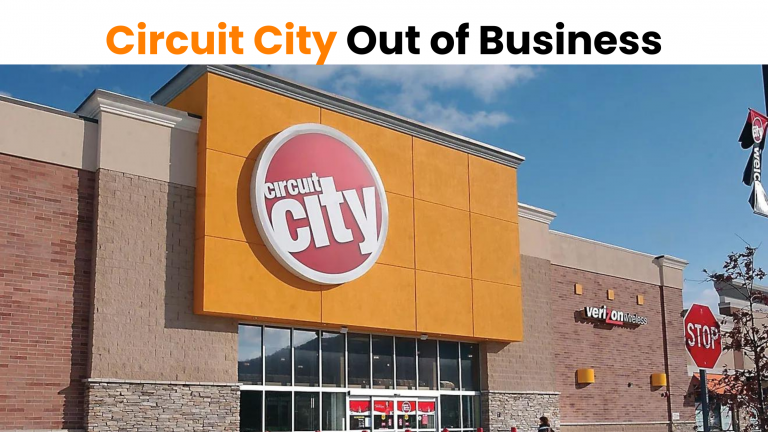Circuit City company was this big deal back in the day. They were like the go-to spot for all your electronics needs, and it felt like stepping into a tech wonderland. The superstore concept was pretty groundbreaking at the time–huge sales floors, tons of gadgets, and that iconic red and white logo.
To be precise, Circuit City was an American electronics retailer founded in 1949 and headquartered in New York, United States.
By 2000, the company employed more than 60,000 people across 616 circuit city locations in North America. Despite severe competition in the market, the company accumulated sales of about $7 billion by 1995.
But then, things started to go south for them. The competition got fierce, especially with Best Buy stepping up its game. And we still can’t get over their decision to fire experienced staff in favor of cheaper hires. On top of it, their customer service took a nosedive, and that’s never a good sign.
Why is circuit city out of business? What happened?
Inability to Adapt
Circuit City failed to adapt quickly enough to changing market dynamics and consumer behaviors. While competitors embraced innovation, new strategies, and technologies, Circuit City lagged behind in innovation and failed to stay relevant.
Later on, Circuit City ceased selling appliances. Moreover, it did not enter gaming as aggressively as it should have. It also neglected major in-store promotions with successful businesses such as Apple Computer. Such situations provided an opportunity for Best Buy to grow in the United States market.
Economic Downturn
The bankruptcy of Circuit City occurred in 2008 during the global financial crisis. The economic downturn led to reduced consumer spending, and many retailers, including Circuit City, faced financial difficulties.
People weren’t splurging on big-ticket items, and Circuit City was struggling to keep up. Best Buy, their arch-nemesis, was getting the upper hand with better customer service and a knack for staying ahead of the tech curve.
Management Decisions
Circuit City made a controversial decision to lay off its higher-paid, experienced sales staff and replace them with lower-cost employees. This move was intended to cut costs, but it negatively impacted the overall shopping experience. Competitors, such as Best Buy, continued to prioritize customer service and product knowledge.
It’s almost like they shot themselves in the foot. Imagine going in for advice on a new TV, and the person helping you is more lost than you are! That move didn’t sit well with customers.
However, for many customers, Circuit City’s biggest shortcoming was its customer support. Customers see the employees as consultants who can offer guidance on how to build a home entertainment center that satisfies their particular requirements.
At the time of the layoffs, Circuit City CEO Philip Schoonover told Reuters that the move would “deliver improvements in our selling, general and administrative expense rate while maintaining appropriate investments to drive our key strategic initiatives such as digital home services, multi-channel and home entertainment.”
Peter Cohan, a Management Consultant and professor at Babson College, told The Associated Press that Circuit City “violated a basic principle of good business” when it made the decision to let the workers go. They (executives) were so focused on cutting costs that they failed to take into account the real value of good salespeople.”
Increased Competition
The electronics retail market became increasingly competitive, with Best Buy emerging as one of the key Circuit city competitors and a formidable rival. Best Buy was able to adapt to changing consumer preferences and technology trends more effectively, solidifying its position as the leading electronics retailer.
To attract customers, Best Buy stores executed a wide range of low-margin products such as CDs, video games, and accessories. Best Buy also recognized that customers no longer required a salesperson to assist them with their purchases as electronics became more affordable and widely available. Despite this trend, Circuit City maintained a commission-based strategy. Salespeople from this company were aggressive and dressed in jackets; they promoted high-margin products with lengthy service agreements.
Online Competition
The rise of online retailers, particularly Amazon, posed a significant challenge to traditional brick-and-mortar stores like Circuit City. Consumers increasingly turned to online shopping for electronics, impacting the sales and profitability of physical stores.
Finally, it failed to improve its online presence whereas online retailers such as Amazon.com were gaining traction.
Let’s not forget the internet, the great disruptor. Amazon was rising, and folks started realizing they could get that flat-screen TV delivered to their doorstep without leaving the house. Circuit City’s huge stores began to feel a bit outdated in the age of online shopping.
High Fixed Costs
The large physical footprint of Circuit City’s superstores meant high fixed costs, including rent, utilities, and staffing. As consumer preferences shifted toward online shopping and smaller, more efficient retail models, the company struggled to maintain profitability with its existing business model.
Also, Circuit City had poor inventory management. At the peak of its popularity, it had over 1,500 locations in the United States and Canada. Due to ineffective inventory management, the business struggled to move its inventory across its extensive network of stores. This hampered its ability to buy new inventory and pay off the millions it owed vendors. At one time, the company owed $118 million to Hewlett Packard, $116 million to Samsung, and $60 million to Sony.
According to Alan Wurtzel, Former CEO of the Circuit City, “We thought we were smarter than anybody. But the time you get into trouble is when you think you know the answers.”
Decline in Consumer Confidence
Circuit City’s problems started during the late 1990s when it failed to secure a prime location. The company’s out-of-the-way locations were inconvenient enough to drive customers to other retailers, such as Walmart.
The overall decline in consumer confidence during the economic downturn further affected the company’s sales. Consumers were more cautious with their spending, and big-ticket items like electronics were particularly impacted.
In Conclusion
Such choices contributed significantly to their downfall. Bosse stated, “It’s not a story where they did one thing really badly. It’s a story of hundreds and hundreds of smaller decisions that added up to be destructive.”
Even though Circuit City failed to innovate and went bankrupt, people still wonder about its existence. The topmost search queries related to the company include:
- is circuit city still in business
- is circuit city still open
- is circuit city coming back
- does circuit city exist anymore
To answer the question, does circuit city still exist: There have been attempts to revive the brand in various forms, including online retail, but these efforts have not resulted in a significant comeback.



